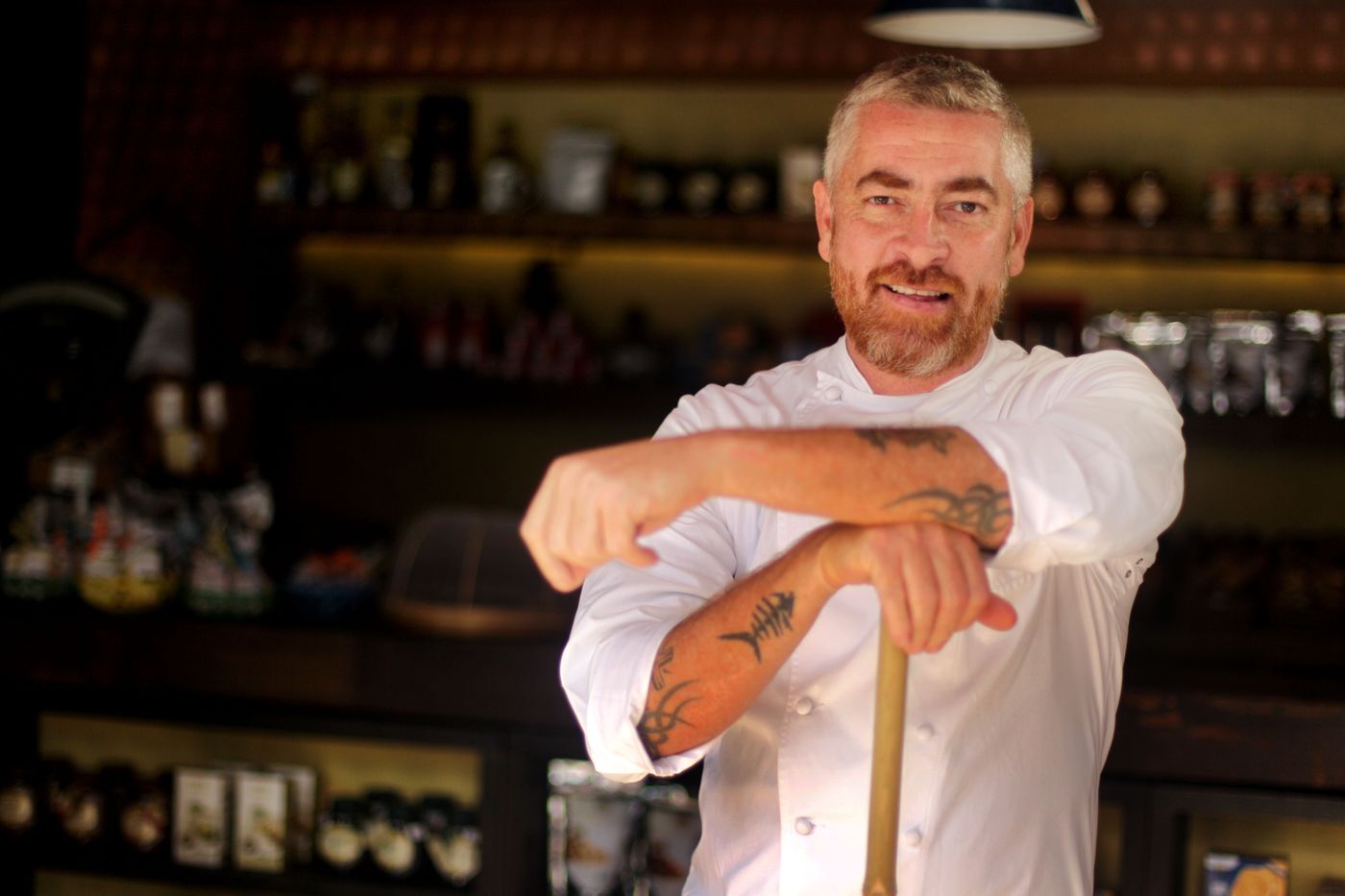
''Food Is All About Transformation'' Alex Atala
Words by Marlena Spieler
Location
''Food Is All About Transformation'' Alex Atala
Words by Marlena Spieler
A couple of years ago I attended a food conference. Held in Barcelona’s surrounding countryside, the subject was Taste: how we think about, develop, and perceive flavours. The global gathering saw chefs and food scientists sharing ideas, demonstrating techniques and sampling unique, stimulating tastes. Among the line-up of chefs were Alex Stupak who expounded on his work with WD-50, Joan Roca who cooked from his local (legendary) restaurant Can Roca, as well as a contingent from Peru who made a pachamanca (a casserole of meats baked in an ''earth-oven'') to fall in love with. Each speaker enticed us with goodies; as a group we burst into happy munching and murmuring each time we sampled a new round of delicacies. Then one person stood up and began to speak: Alex Atala.
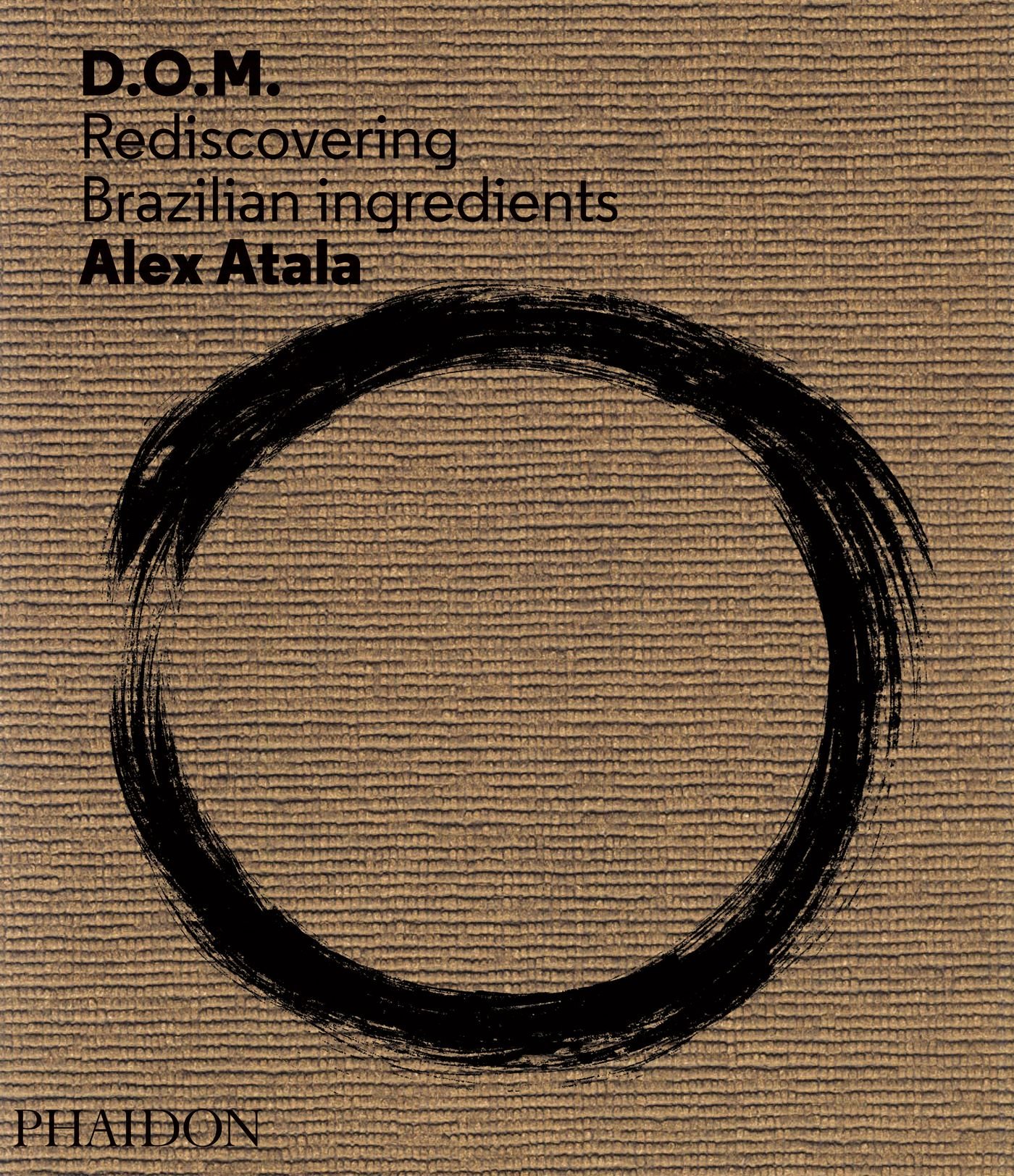
D.O.M.: Rediscovering Brazilian Ingredients. Alex Atala. Photo © PHAIDON.
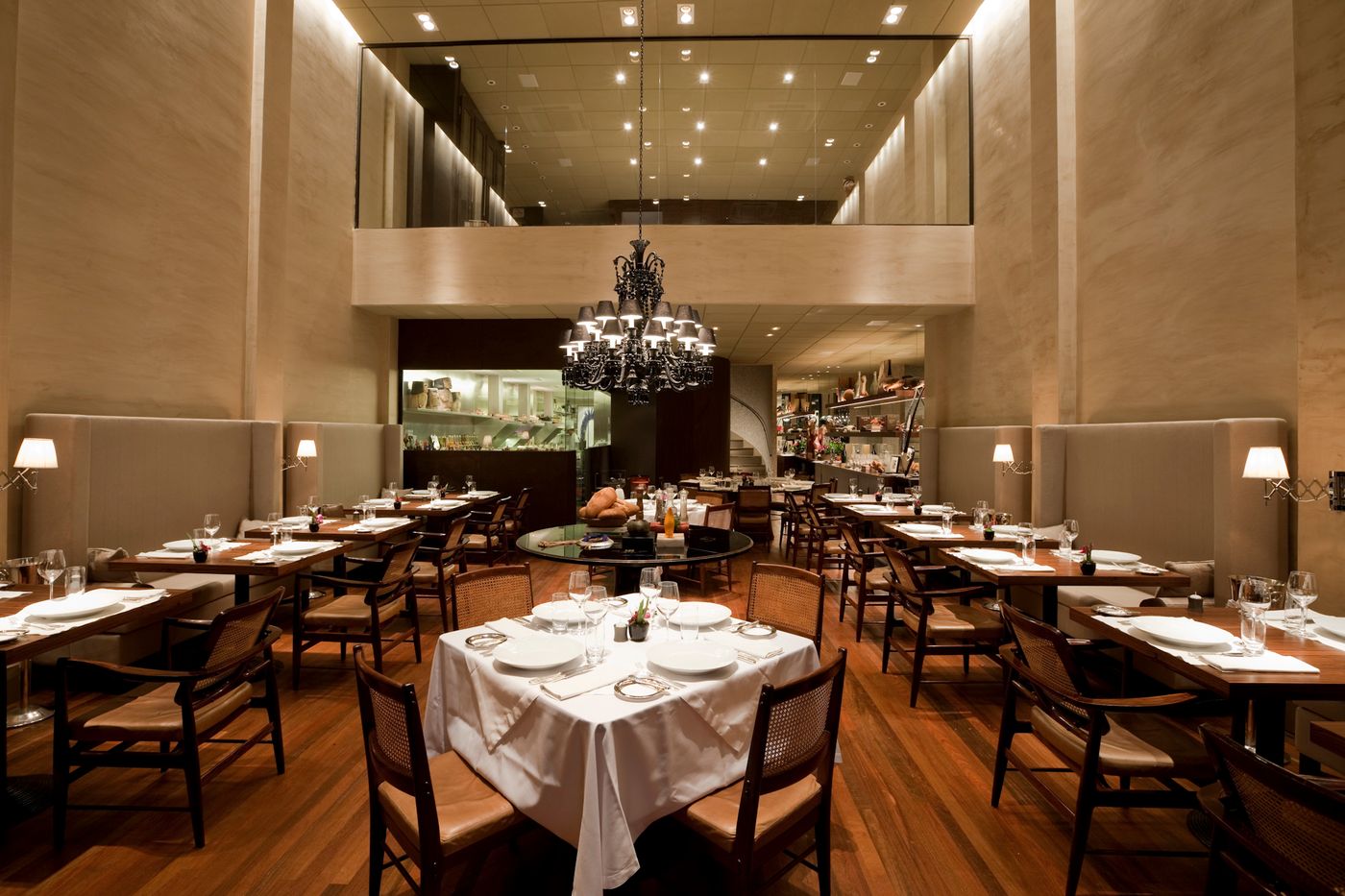
D.O.M. Restaurant, São Paulo, Brazil.
He wasn’t yet famous - for either his cuisine, ideas, or tattoos - but when this soft-spoken, charismatic man began to describe the food of his homeland, Brazil, to be more precise, the Amazon, the room became very very quiet and still. Suddenly, listening to his tales and observations, no one wanted to miss a word, an idea, especially not a taste.
The taste he brought us was, literally, a hump; from an indigenous South American cow - a creature that, like a camel, is humped. We spooned up small plates of this rich, melting-tender and meaty braise; I hadn’t anticipated eating hump: but there it was: delicious. I longed for more. And I thought: I haven’t heard the last from this man and his exotic flavours of the jungle.
Flash-forward to 2013 and Alex Atala is the man of the moment; his São Paulo restaurant D.O.M. (which opened in 1999, and is short for Deo Optimo Maximo, meaning: To The Greatest and Best God) has arguably changed the face of Brazilian gastronomy. It is currently ranked #6 in the world and September 2013 sees the publication of ‘DOM: Rediscovering Brazilian Ingredients’, published by PHAIDON.
Much sought after on the lecture trail, Atala shares his inspirational observations of Amazonian life and its indigenous cuisine. You can see him speak and share videos online at Design Indaba 2013, on Eater.com, or at the recent MAD 2013 food conference in Copenhagen where Atala, wearing a tee-shirt emblazoned: Death Happens, illustrated the connection between life and whats on the plate by killing a chicken, as, according to Eater.com, audience members encouraged him. Afterwards he cooked up the bird and, according to his principles: there was no waste. This reality-show was an illustration of what meat really is - an animal - and how it comes (or should come) to the kitchen and to our plates. How many became vegetarians as a result? Who knows. But Atala will be co-organizer of the MAD 2014 food conference. Take a moment to watch his presentations: at once uplifting and inspiring. You will not think of food the same afterwards; you might not think of ANYTHING the same afterwards.
Believing cuisine to be the link between culture and nature, Alex Atala is extremely involved in raising the awareness of Brazil’s vulnerable resources. Working with scientists, anthropologists and organizations, his mission is to nurture both the environment and its indigenous peoples.

portrait of Alex Atala by Filipe Araújo/Estadão.
A huge amount of thought and observations go into each of Atala’s dishes at D.O.M.. He ponders on old ideas versus new:
''Old ideas can be clever, but put them together in a more modern way and they become new ideas, it’s all in the utilization. A newer technology than the smart phone/internet, yet one becomes used more than the other because it is needed; It works better. It’s not necessarily when it was invented or discovered that matters - it is how useful (and this can be very creatively useful) it is. The key to modern flavours is looking at, and using, old flavours in new ways.''[...] Food is all about transformation. Take the maillard reaction in which the cells on the surface of the meat are caramelized to a golden brown, creating deep rich flavour. It is not new; it is ancient.Yet that browned, savoury umami character creates foods as modern as they are traditional.''
Chef Atala speaks of the hallmarks of world cuisines as ''the souvenir of a place''. Soy sauce, miso and ginger the souvenir, iconic flavour of Japan, mozzarella, tomato and basil=Italy while local herbs, lemon and manioc ''are Amazonas''. Think of how when you visit a place you leave with the flavours that create the cuisine; whether it’s a geographical location, or going home to visit your family. Each place has these flavours that you add to the simplest of fresh foods and voila: you have the taste of the place and the souvenir of the time+place. The best way ''to be global'', he states: ''is to be local''. To go back to our roots, to eat and explore the foods we are surrounded with and...yet...use these ancient foods that we may have forgotten, in a multitude of new ways.
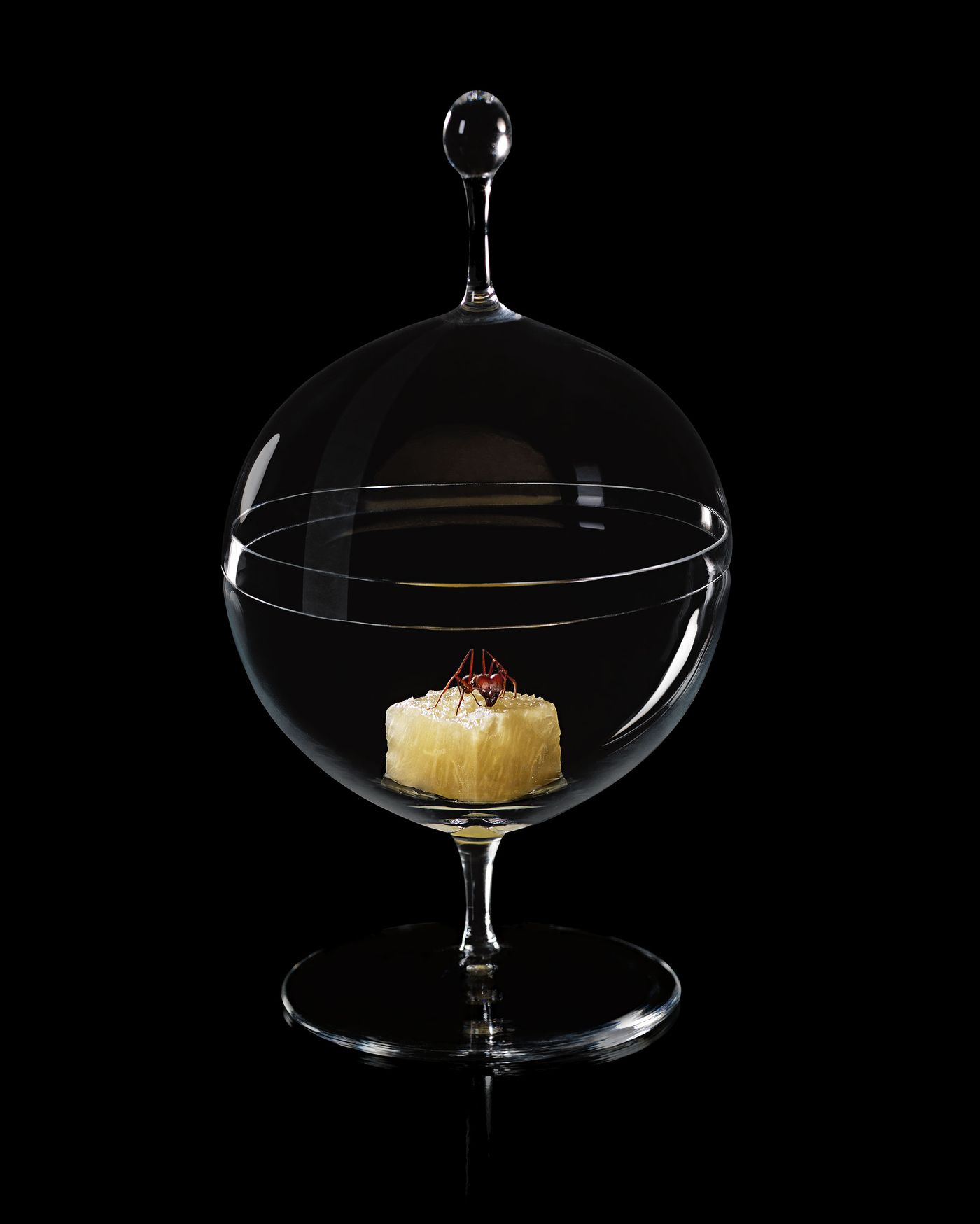
Ants and pineapple. D.O.M.: Rediscovering Brazilian Ingredients. Alex Atala. Photo © PHAIDON.

Heart of palm fettuccine with butter and sage and popcorn powder. Photo © Alex Atala, D.O.M.
He continues to observe our taste and perception of taste as a provocative sensual trigger that make us think. ''One flavour'', he observes ''can be one thing, and yet it can be another''. ''Is it dirty sneakers (trainers) or is it ripe fermented cheese?. The same aroma, yet one way of looking at it is delicious, and the other is disgusting''. He recounts how whilst hiking in Nepal, eating only vegetables, after 15 days he came across a village and smelled barbecue; ''it smells wonderful, our mouths salivated, we felt, you know, we deserve a nice piece of barbecued meat''. But it was not a barbecue. It was a traditional death ceremony, the ritualistic burning of a corpse. And suddenly, this SAME aroma, at once erased the desire for meat. He and his companions were no longer hungry, though they could still smell the fire.
Of D.O.M.’s daily tasting menu he shares that: ''It is interaction, the possibility to play''... ''we give you flavours yet it is how to put them together, yourself and the foods''. Along with the obvious wine and water that are served alongside his dishes, Chef Atala prepares a flavoured water: steeped in the fruits and seeds, aromatics and essences of the jungle…..each taste interacts with the courses served. A sip of the fragrant drink, a bite of the food; each bite is a unique experience that will hopefully also be transforming.
(I am reminded of Miguel Sanchez Romera, who introduced flavoured waters at his short-lasting NYC restaurant, Romera; and remember how they were refreshing, thought-provoking, and unique).
Alex Atala’s cuisine is steeped in the Amazon, it is true: but watch (in the video) the modernistic skills: the mandolin, the artful placing with tweezers, the thought-provoking combination: these are the hallmarks of contemporary modern restaurants, especially in Europe. Chef Atala explains that he developed his cooking skills in Europe, working in top rated restaurant after top rated restaurant. One day he looked around and thought: ''I do not make the BEST French food, nor Italian, nor Spanish…..but I CAN MAKE THE BEST BRAZILIAN food'' and so he returned to South America to do just that, and grow his own unique fusion of modern techniques, rooted deeply in the indigenous ways and traditions of the Amazon.
He tells stories about how he incorporates the flavours of the jungle into his food: How once when a fire destroyed much of the forest near his farm, he brought the scent of fire into his food: introducing a taste of burnt wood to obtain an essence of smoke from the tropical rain forest.
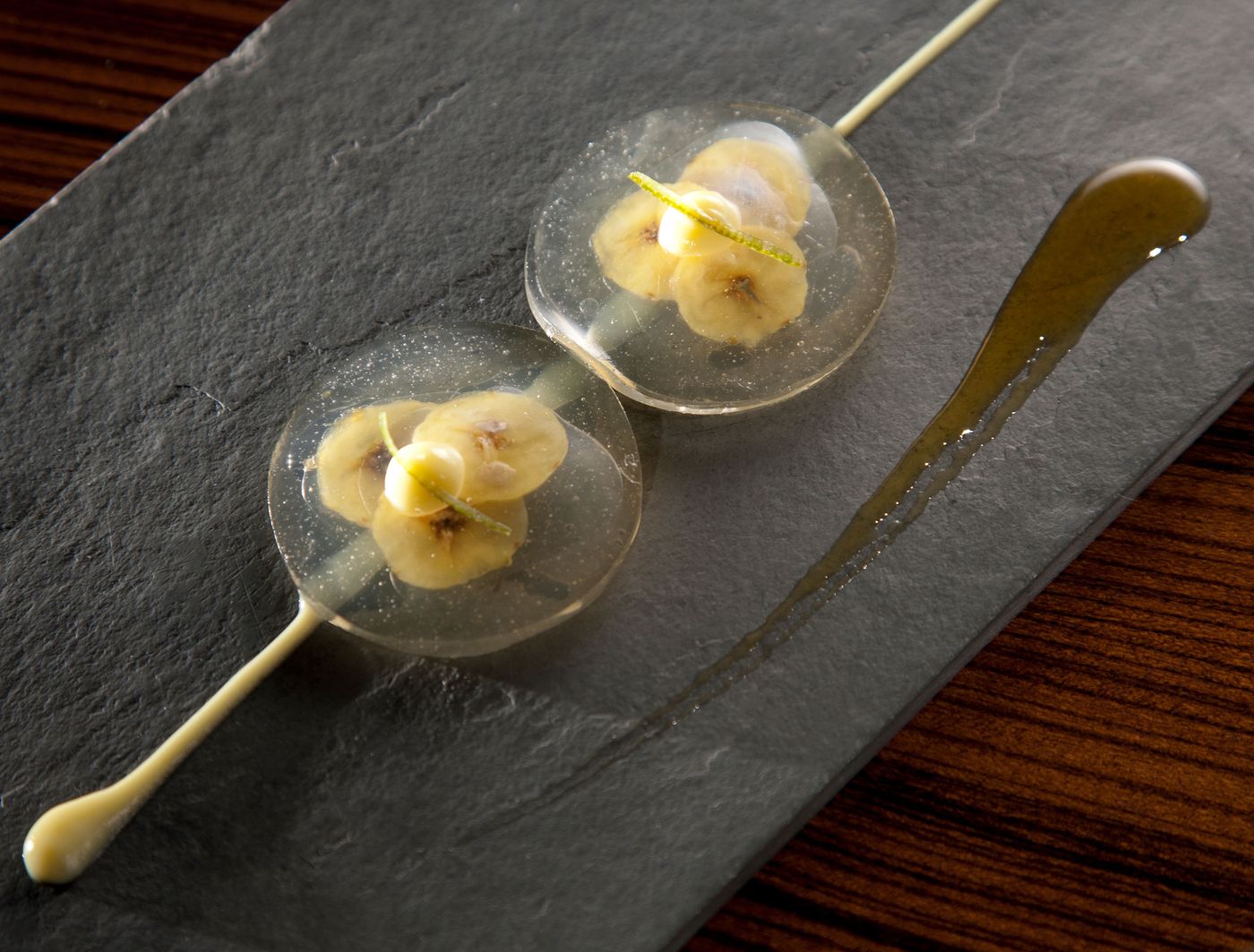
Banana, lime and priprioca caramel ravioli. Photo © Alex Atala, D.O.M.
One of Atala’s favourite and often mentioned dishes is pineapple with ants. Before you think that this is a metaphor, let me stop you: it is pineapple as well as the insects which you might not have previously thought of eating. Insects are, indeed, a subject that rouses Chef Atala’s attention: ''our world’s booming population cannot afford to waste …..If we could eat the parts that get thrown away in our unsustainable world food industry, we could feed the masses... We must eat the entire animal - our grandmothers knew this!'' He continues that insects are a neglected source of protein. ''In the jungle, we eat ants: they taste of lemongrass and ginger; once I was eating a bowl of soup, such deep complex flavour, and I asked the cook: what herbs did you use? She replied: It is the jungle, we use only ants!'' He reminds those of us who are hesitant about eating insects that our tinned and packaged foods are allowed, by law, to include a percentage of insect parts, and that cochineal, the red colouring found in many different foods worldwide, is in fact, an insect dried and used as food dye. Then he mentions honey: not only is that an insect: but it goes through the digestive tract of the bee. ''We don’t eat shit, but what is honey?'' he asks, in this way constantly challenging what we think we know about food.
As a chef, Atala is always thinking through new dishes, and yet is often surprised at what works and what doesn’t.
''I wanted to serve a beautiful steak, with a Béarnaise sauce that was flavoured with my local tastes, infused with yerba mate tea, and served with sweet potato cooked in ash. And yet: when I went to taste it, I knew body and soul must be separated: the sweet potato was perfect with yerba mate, but the meat…..was terrible with it all. We had the soul of the dish, but the flesh was not needed!''
As mentioned before how one of Alex Atala’s most iconic dishes is pineapple and ants: And if you think that they are prepared in such a way that they are disguised in a complex sauce: no they’re not. They are served as is. Atala’s dish consists of pineapple, frozen, scattered with ants, also frozen. And rumour has it, the dish is delicious. As to how his new book DOM: Rediscovering Brazilian Ingredients will write this recipe up, will it offer a substitute for the ants? I don’t know. But I do know that this is a man who says: ''Trust your ingredients'' (this is what got me to the Amazon), the man who got me to eat hump; so I’m saying: I trust him with my pineapple. And can’t wait for my taste of Alex Atala’s Amazon or at least a romp through its pages.
DOM: Rediscovering Brazilian Ingredients profiles 40 Brazilian ingredients such as okra, catupiry, tucupi, and erva mate, along with a narrative that has Atala re-discovering these ingredients as he makes his way through the villages, beaches and deep rainforest of his homeland. The book is 320 pages, 150 of which are illustrated. Published by PHAIDON.
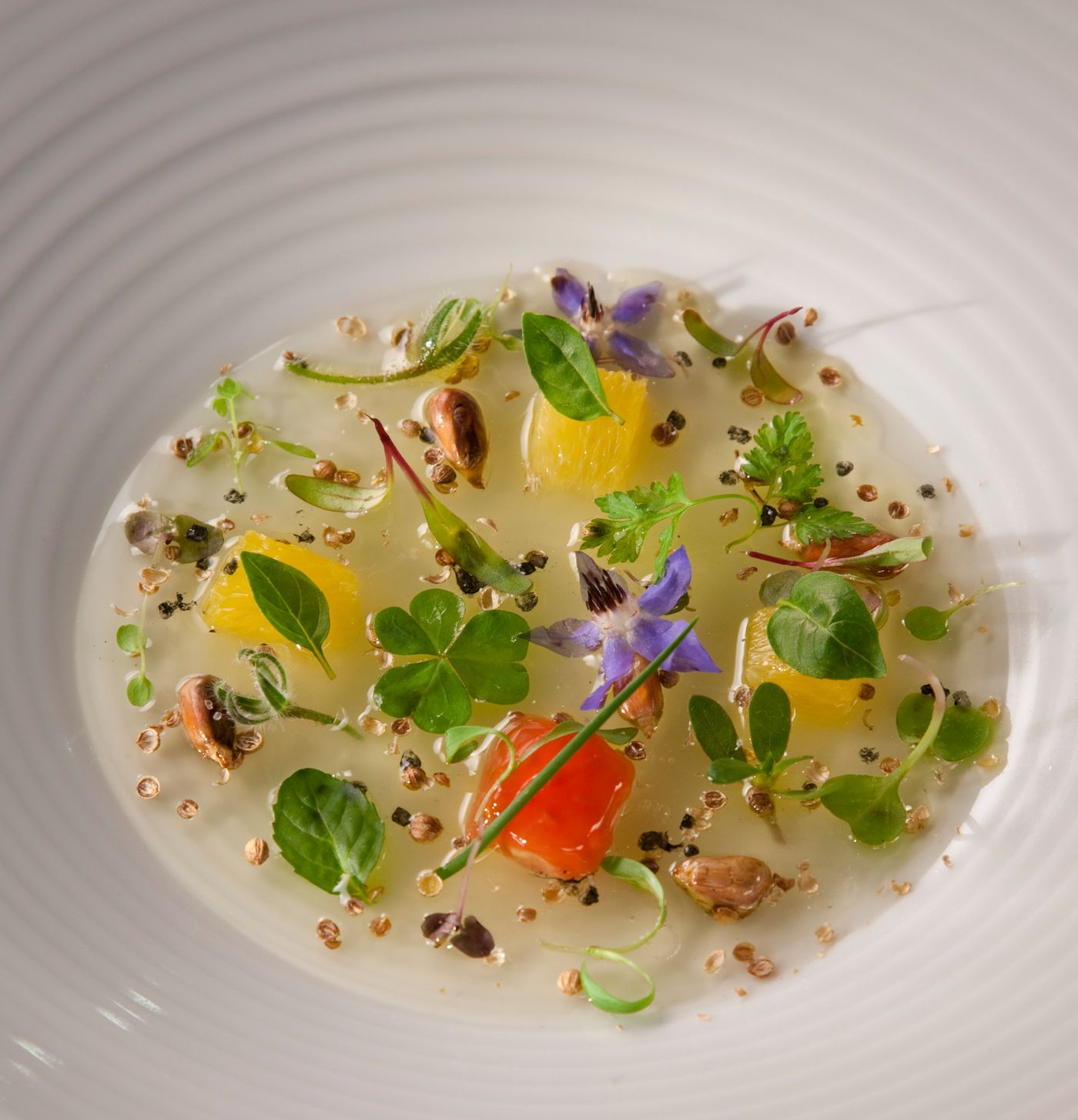
Green Tomato Gel. Photo © Alex Atala, D.O.M.
GREEN TOMATO GEL
(serves 4)
Ingredients
• 20 green tomatoes
• 15 ml white vinegar
• 1 bay leaf
• 4 tablespoons coarse salt • 8 g salt
• 8 g gelatine sheets
Preparation
• Using a centrifuge, remove the juice of the tomatoes and strain it into a bowl through a fine chinois lined with a wet cloth.
• Season with vinegar and salt.
• In a shallow dish, hydrate the gelatine sheets with ice-cold water.
• Using a cooking thermometer, heat 1⁄3 of the tomato juice to
60°C (140°F) and add the gelatine, then the rest of the juice. • Place 3 small ladlefuls of the mixture in the bottom of each of the serving plates, and place them in the refrigerator for 2 hours.
Finish and presentation
• 5 ml extra virgin olive oil
• 4 g black salt
• 4 g coriander seeds, lightly
crushed
• 1 orange supreme, the segments
divided into 3 parts
• basil leaves
• fine salt
• the seeds of one red tomato
• 4 cobs Peruvian corn, toasted • Szechuan buttons
• beetroot sprouts
• chervil sprouts
• celery sprouts
• clover leaves
• watercress sprouts
• purslane
• edible flowers, such as borage
..................
• Take the plates from the refrigerator and drizzle the olive oil over the gel, then sprinkle black salt and coriander seeds over the surface.
• Arrange the orange supreme segments on the surface of the gel and garnish with the basil leaves, then sprinkle a touch of fine salt over each piece of orange supreme.
• Place the tomato seeds alongside the coriander seeds.
• Finish with the Peruvian corn kernels, the sechuan buttons, the sprouts, the purslane and the flowers.
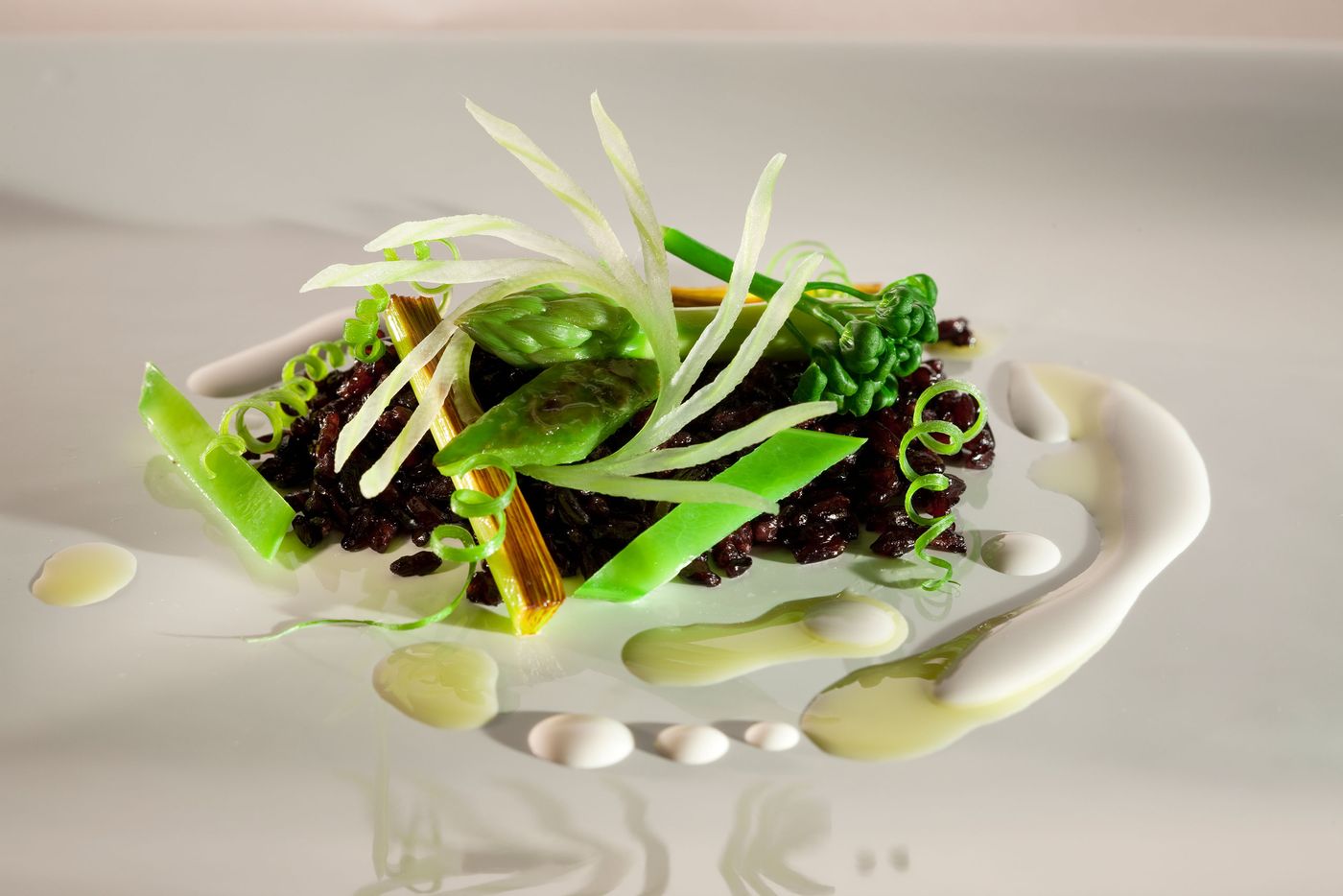
Lightly toasted black rice with green vegetables and Brazil nut milk. D.O.M.: Rediscovering Brazilian Ingredients. Alex Atala. Photo © PHAIDON.